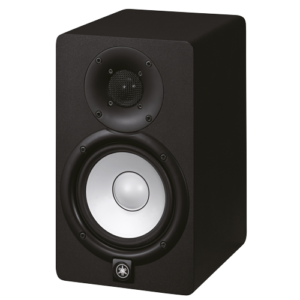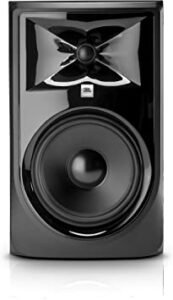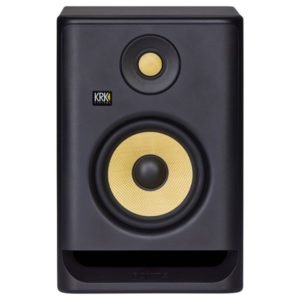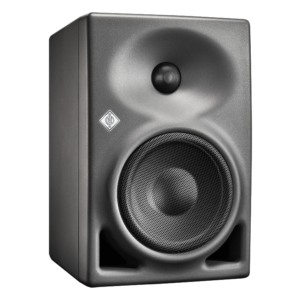Whether you’re just starting to make your own EDM beats, switching gears from DJing to producing, or you’ve been crafting electronic tracks for a while, one thing’s for sure: studio monitors are your sidekicks in this music adventure. Now, I’ve been down this road myself, messing around with a bunch of different studio monitors as I dabbled in EDM creation. And let me tell you, a reliable pair of monitors are absolutely essential.
Imagine those moments when you’re tweaking your low-end until it hits that sweet head-nodding groove, or when you’re fine tuning the treble to catch every sparkle of a hi-hat. Making EDM is a bit like crafting something special – you’ve got to have the right tools in your toolbox. That’s where studio monitors come into play, like the trusty tools that help you shape your sonic masterpiece. They’ve got to be reliable and precise, no messing around.
There’s a ton of options available to you, from a range of manufacturers, for various budgets, suitable for differing use cases. To cut through the noise, this article outlines the best studio monitors for EDM production by scouring both critic and user reviews.
Best studio monitors for EDM production – Overview
| |||
| |||
| |||
| |||
|
For general information on what you should look for in studio monitors, skip to the end of this article.
Best studio monitors for EDM production – Detailed
1. Yamaha HS5
The Yamaha HS series is a firm favourite of both bedroom and professional EDM producers alike. In particular, these monitors are known for having an exceptionally clear, flat frequency response for their cost, relative to other speakers.
You may read plenty of user opinions that a 5″ subwoofer does not pack enough low-end power or range to produce bass-driven electronic music. For the majority of home studio producers, the Yamaha HS5 does. The Yamaha HS series has an exceptional low-end even in the smaller size – perfect for sculpting deep, elaborate basslines. If your studio setup is in a large room or you plan to thoroughly master and engineer your sound, the larger Yamaha HS8 is a better option for you.
The Yamaha HS5 has a 5″ woofer and 1″ dome tweeter, with a frequency range of 54Hz – 30KHz. On the other hand, if you do feel that you need a larger monitor, the Yamaha HS8 has a 8″ woofer and 1″ dome tweeter, with a frequency range of 38Hz – 30KHz.
2. JBL 305P MKII
They’re not as well-known as the Yamaha HS series or Rokits, and perhaps seen as less ‘fashionable’ monitors, but the JBL 305P MKIIs are highly regarded by critics and users as affordable yet great sounding speakers. It’s actually a bit of an injustice that these monitors aren’t as recognisable given their outstanding value.
What makes the JBL 305P MKIIs stand out from other monitors around the same low price range is their bass response. Even the 305P – the 5″ woofer version – produces a rich low-end with little distortion, coupled with clarity across the mid and high frequencies, plus durable build quality for long term usage.
If you’re after more powerful bass for producing in a bigger room, at a louder volume or for intricate EDM mixing and mastering, the JBL LSR310S subwoofer is a great accompaniment which gives you the flexibility to mix with and without a heavy low-end.
3. KRK Rokit 5 G4
Rokits are instantly recognisable and found in studios of EDM producers globally. This is because the entire range, including the KRK Rokit 5 G4, provides exceptional sound quality at an affordable price point.
The KRK Rokit 5 G4 has a 5″ woofer and 1″ tweeter, with a wide frequency range of of 43Hz – 40KHz. It produces a warm, rich low-end, plus sounds clean and crisp in the mid and high ranges. It comes with an app to help even novices fine tune the sound output to adjust to the conditions of your studio space.
As the bass is so full and prominent, the KRK Rokit 5 series doesn’t provide as flat a response as the Yamaha HS series. However, if you plan to double up and use your monitors to both produce and DJ EDM, the KRKs may be a better option for a more enjoyably listening experience, closer to the experience of mixing and DJing in venues.
4. Adam Audio A7X
The Adam Audio A7X is a brilliantly balanced monitor that provides the tonal depth that EDM producers need to craft detailed, futuristic-sounding music. It’s not surprising considering Adam Audio monitors have frequently been voted the best accessible speakers by users in the last 10 years.
With a 7″ woofer, it’s bigger than the other monitors on this list, so may be a more suitable option if you produce electronic music in a larger space or if you’re after a speaker with a bigger sound to precisely hone in on your mix across the frequency spectrum. With a frequency response of 42Hz – 50KHz, the A7X will give you serious control of each stage of the production process, from composition to mastering. In particular what makes these monitors stand out is the extremely clean, crisp and detailed mid-range, although to be honest the A7X is impressive across the frequency range.
On the whole, they’re a little pricier than earlier speakers on this list, but with their accuracy, flat response and acclaim from critics and users alike, you cant really go wrong with a pair of Adam A7Xs.
5. Neumann KH 120 A
Neumann is a brand associated with professional-grade microphones, but their monitors are also worthy of any studio. The KH 120 A monitor offers the accuracy and durability required to spend years crafting your EDM sound with complete confidence in your output.
The Neumann KH 120 A has a woofer measuring just over 5″ and a 1″ tweeter, but really packs a punch for its size. Enclosed in a solid aluminium case, the KH 120 A is often cited as the most accurate monitors ever reviewed by users and critics, especially within the price bracket. Seasoned producers and sound engineers often couple these monitors with a high quality subwoofer, and to really give you extreme oversight of the lowest octaves, a woofer is a smart investment. For serious bass extension, the Neumann KH 805 series of subwoofers will definitely do the trick.
These speakers are truly designed to give you a completely honest sound, without distortion or tweaks. Simply put, if your EDM track sounds good on Neumann KH 120 As, they will sounds good on any speaker or pair of headphones. If you opt for them you can expect phenomenal sound quality and accuracy, as well as (typical of a German manufacturer) outstanding build quality, meaning you’ve bagged yourself studio monitors for the very long-term.
What should you consider when purchasing studio monitors?
At a basic level, there are three core factors to consider before you purchase a pair of studio monitors:
- Quality – In terms of quality of the sound output, you need monitors that provide a flat response across the human-detectable frequency range. This is known as ‘dynamic range’, and in other words, your speakers need to output sound that matches your input as closely as possible, without distortion so that you have full control over your sound. This is particularly important for EDM which can have an extremely detailed, wide range. In addition, you need monitors that have a high build quality, so that they are long-lasting, resistant to knocks and wear-and-tear.
- Size – When we talk about the size of a studio monitor, we’re more specifically talking about the size of the subwoofer and the tweeter. You need a larger subwoofer and monitor to produce a loud, powerful and accurate low-end. This list is comprised of smaller, high quality 5″ monitors, as home studios are typically in smaller to medium sized rooms, where you simply don’t need a booming sound at a higher cost. However, if your studio is in a larger room, you’re interested in sound engineering or you’re a more seasoned EDM producer, a larger monitor may be a better option for you, or alternatively you can couple a smaller monitor with a subwoofer.
- Price – Of course, the quality and size of monitor is generally correlated with price, and you can spend a small fortune on speakers. This list, however, is comprised of monitors that are at the more affordable side of the price spectrum, but offer great value. It’s completely down to you how much you’re comfortable spending, though I definitely do not recommend purchasing super cheap or bog-standard bookshelf speakers, as you simply will not be able to control your output and ultimately craft deep, detailed electronic music.
What’s the difference between studio monitors and speakers?
Studio monitors aim to represent a recording as accurately as possible – this is known as a flat frequency response. On the other hand, regular speakers are designed to sound good, so they often boost and enhance certain frequencies For music producers and sound engineers, hearing an ‘honest’ sound is extremely important, as you need to hear imperfections in your sound so you can fix them. Regular speakers aim to gloss over imperfections making them unreliable and misleading when recording, arranging, mixing and masters original sounds.
*As an Amazon Associate I earn from qualifying purchases.
An experienced DJ and beatmaker with a passion for all things sampling, Soulection and tech.










